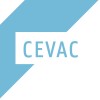
Stroke Prediction Through Internet Search Queries
StrokeAcute Myocardial InfarctionCerebrovascular disease (stroke) is a leading cause of mortality and disability. Common risk assessment tools for stroke are based on the Framingham equation, which relies on traditional cardiovascular risk factors (e.g., hypertension, dyslipidemia, diabetes, smoking, atrial fibrillation). These risk assessment tools calculate the likelihood for a general vascular "event" such as stroke and myocardial infarction in the near decade, but do not assess the risk for an impending event although that would enable taking immediate preventive action (e.g. anticoagulants for atrial fibrillation; control of hypertension). Covert cerebrovascular disease is linked to subtle cognitive and motor deficits and increased risk for stroke. We hypothesize that it is possible to identify subjects with impending stroke based on their internet communication features 0-12 months prior to the actual occurrence of acute clinical stroke. Based on this we have previously developed an internet-based algorithm that accurately identifies people at risk of stroke through cognitive changes manifested in their search queries. The purpose of this study is to validate the model and train a new model by analyzing Google queries of patients hospitalized in the Tel-Aviv Sourasky Medical Center with stroke. Acute myocardial infarction and unaffected spouses will serve as controls.

Follow up of Stroke Patients by Neurologists and General Practitioners
StrokeFrom the region around Brussels there are currently few data on how the post-stroke process take place and how satisfied the care providers are with it. For this reason, this survey is set up with the aim of examining four pillars: the epidemiology of stroke, communication between neurologists and GPs and satisfaction with it, secondary prevention of cardiovascular disease and control/treatment of the most common sequelae after stroke. In the latter two, the emphasis is on detection and treatment, and explicitly on whose task this is (neurologist versus GP), with the aim of verifying the mutual consensus on treatment and the subsequent detection of treatment shortcomings. This study will mainly consist of interviewing general practitioners and neurologists in the periphery of Brussels. This will be done by means of partly structured questionnaires, that will be send out to the medical professionals by contact with the central umbrella organisations of neurology in the hospitals and contact with the various general practitioners' practices (directly or through the multidisciplinary meetings per region). The questionnaires will be made up in google forms, as this programme allows efficient data processing, is eas-ily understandable for every participant and as no individual patient data will be processed.

Combined Use of BIOTRONIK Home Monitoring and Predefined Anticoagulation to Reduce Stroke Risk
Atrial FibrillationAtrial Flutter4 moreThe IMPACT Study will investigate the potential clinical benefit of the combined use of BIOTRONIK Home Monitoring (HM) technology and a predefined anticoagulation plan compared to conventional device evaluation and physician-directed anticoagulation in patients with implanted dual-chamber defibrillators or cardiac resynchronization therapy devices.

Dynamic Decompressive Craniotomy
Brain EdemaTBI (Traumatic Brain Injury)4 moreProspective observational study on patients undergoing decompressive craniotomy

BELgian CT-perFUSion Study to Select Acute Stroke Patients for Thrombectomy
StrokeStroke3 moreThe goal of this clinical trial is to test whether perfusion CT can be used as a selection tool in stroke patients with a major anterior circulation occlusion, to exclude patients from thrombectomy because of a predicted non-beneficial outcome, when treated within 6 hours of symptom onset. Researchers will compare the experimental group, where mechanical thrombectomy is only performed when prespecified perfusion CT criteria are fulfilled, with the standard of care treatment group, where all patients will receive mechanical thrombectomy, to see if functional independence at 90 days is non-inferior.

Zeit Alert for Stroke at Home (ZASH) Protocol
Acute Ischemic StrokeIschemic Stroke1 moreThis is a single-arm, observational, feasibility study to evaluate if the Halo Alert System can be used in the future to detect stroke events in individuals at risk for stroke wearing the Halo Alert System overnight.

Evaluation of Neurosteer System in Stroke Patients
Acute StrokeThis is an observational study. Patients who fulfill all inclusion criteria and none of the exclusion criteria will be enrolled in the study, be neurologically evaluated and will go through a series of EEG recordings during their hospitalization. EEG recordings will be analyzed using proprietary computational analyses.

Long-Term Outcomes of LAA Contrast Flow in CT Scans After Endocardial LAA Closure: The CF-CT Registry...
Atrial FibrillationIschemic Stroke1 moreThis study is intended to assess the incidence and correlation to the development of peri-device leaks (PDLs), device related thrombosis (DRTs) and cerebral vascular accident (CVA)/transient ischemic attacks (TIAs) in association with left atrial appendage contrast flow (LAA-CF). It will be a multi-center, retrospective study. Approximately 100 subject charts will be reviewed.

Combinating Fingolimod With Alteplase Bridging With Mechanical Thrombectomy in Acute Ischemic Stroke...
StrokeInflammationProof-of concept clinical trials have indicated that the sphingosine-1-phosphate receptor modulator fingolimod may be efficacious in attenuating brain inflammation and improving clinical outcomes in patients with AIS as a single therapy beyond 4.5 hours of disease onset, or in combination with alteplase within 4.5 hours of disease onset. So in this study the investigators try to determine whether the addition of fingolimod, administered within 6 hours after the onset of symptoms in patients receiving alteplase bridging with mechanical thrombectomy, improves radiologic and clinical outcomes.

Relation of Carotid Artery Plaque Inflammation, Covert Stroke and White Matter Disease
TIAStroke1 moreThe investigators hypothesize that inflammation in carotid plaque is predictive of the extent of ischemic lesion burden on the brain and will add to risk stratification for individuals with carotid disease.
